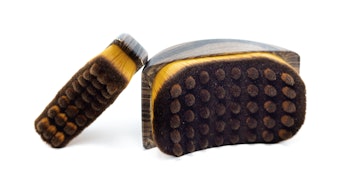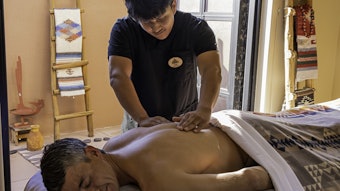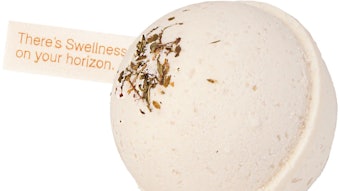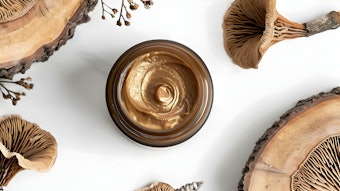The spa and wellness business is one of the most rewarding industries to be a part of in today’s age of fast-paced living and high burnout rates. What could be better than influencing people to take time out of their busy lives in order to de-stress? To see someone walk through the door feeling frazzled and out of breath only to then leave with a sense of peace and well-being? This is one of the most rewarding parts of the job.
In order to further cultivate these feelings, many spa owners and managers are looking at how to incorporate nutrition into the spa mix. Can clients actually be influenced to be more food-conscious, and can that have real, lasting, positive results to their overall health? If spas are in the business of wellness, then including the key component of nutrition is necessary when providing clients with a complete experience.
Nutrition implementation issues can be discussed in a professional manner, and the following will attempt to address several key questions. There are also a few tips and tricks on things such as business models and how to turn a profit in order to help with adding nutritional offerings to your spa’s menu.
A key component of wellness
Everyone has heard the saying, “You are what you eat,” but how many truly understand it? The facts really come to light when it is explained that every food a person eats contains energy on a cellular level, and you literally absorb this energy through the food you ingest. Science says the more natural the food we eat, the better it is for our body, and that is why there has been a movement as of late toward eating whole, organic foods.
Eating these types of foods, according to holistic nutritionist Jennifer Hunter, means eating foods as close to their natural growing state as possible. “The more processed or refined the food, the more nutrients you lose and the less energy it has—along with a lot of added chemicals and toxins,” says Hunter. “Over time, this will have—and already has had—large negative health effects in our society.”
This is not to suggest that everyone needs to turn into a vegetarian, eating only whole foods, though that would make for a healthier populace. Rather, by bringing a heightened level of consciousness to what people ingest, significant and long-term positive changes can be made. Eating out of habit or according to one’s upbringing is simply no longer a good idea.
The role of spa professionals
At their core, spas are focused on healing and well-being, so this is a huge opportunity for them to become an avenue for clients to learn more about the importance of the food they eat, as well as the positive impact the right kinds of food can create in their lives.
Clients come to the spa because they want to feel better about themselves, whether it is to improve their skin, reduce their cellulite, relieve muscle aches and pains, release stress or for any number of other health-related reasons. Obviously there is a general consciousness about all of these things, or spas would not be in business, and, usually clients are already trusting of their favorite spas to deliver results on these fronts. Spas can inspire clients who come in for a day at the spa to leave feeling good not only on the outside but on the inside as well.
Something many clients don’t think about that can often have a direct effect on the treatments they are receiving is the food they eat before, during or after services. For example, if someone is coming in for a cellulite or detox treatment, you can only scratch the surface if you aren’t addressing what the person is eating in her day-to-day life. In order to properly improve results from a wide variety of treatments, as well as make for a happy clientele, today’s forward-thinking spas should speak to clients about eating a healthy diet, drinking enough water and exercising as part of a successful body and skin care regimen.
Nutrition incorporation
Many spas today are already becoming more aware of the importance of offering nutrition as part of their service mix, partnering with nutritionists and offering nutritional counseling directly on their menu of services. And these nutritional treatments and appointments can vary from a single session to series of six or eight.
“Typically in a one-time session, I will do a food analysis of what my client eats, go over their health goals, how they can achieve them, and give them ways they can nutritionally improve their diet,” Hunter says. In a six to eight week session, she stresses focusing and achieving greater results on specific issues such as weight loss, detoxification and increasing energy levels. These are concerns a lot of clients deal with, so these types of services are a perfect complement to what a spa offers, creating greater client trust and loyalty by repeatedly bringing them through a spa’s doors.
Of course, not every spa can afford to hire a full-time nutritionist to have on staff. In that case, there are other options. Spas can consider hiring a nutritionist part-time, or perhaps having a contact where the nutritionist works on a case-by-case basis. There also are companies on the market that offer equipment, training for estheticians, meal plans and nutritional research to spas in order for them to help their treatments be more effective.
Nutrition can also be incorporated by serving food and beverages in the spa. “Spa cuisine” has become the latest industry buzz, with light, healthy snacks and lunches being offered to clients more and more. Other choices are also available, such as herbal teas, which offer a variety of different blends, including those to help to detox and de-stress. Herbal teas can be powerful in helping to enhance the effects of treatments, and serving spring or oxygenated water flavored with organic fruits, vegetables and herbs is a great idea as well, because drinking water is so important to skin and body health. Water helps keep the body hydrated and flushes toxins, so spa professionals should even be recommending that clients drink more water as part of their at-home skin care regimen.
From a business point of view, nutritional offerings can keep clients in the spa longer, allowing them to enjoy more treatments without having to exit the spa between services, as well as enhancing the results of the services they are already receiving. And these types of offerings can be taken one step further by printing the nutritional components of each item on your food and drink menu, as well as on your Web site, so the client can understand the positive benefits they are receiving from these carefully chosen items.
Nutrition for sale
A great way to build buzz for your spa’s new tasty offerings is to have a client appreciation night with a nutrition theme. Offer spa smoothies and snacks, and have a local nutritionist do a complimentary workshop on the fundamentals of healthy eating.
An event such as this not only increases awareness on the crucial nutritional part of wellness—it also helps you to gain people’s trust and the opportunity to have them book services with your spa. Then, by offering these kinds of items and services on your menu, you can keep clients coming back to you for their nutritional, as well as skin and body care, needs.
Be sure to follow up any events or services on nutrition by implementing these new offerings into your menu options, and have staff members discuss these additions with anyone who comes into the spa. Also, always be on the lookout for hot new ingredients that you can incorporate into your menu. Keeping things fresh keeps clients coming back for more.
Nutrition-based spa retail is another great way to incorporate nutrition into wellness offerings. Ideas of products to offer include whole food cookbooks, essential oils and other whole food supplements whose effects can be discussed with a nutritional practitioner or spa professional who has nutritional training. These types of items will help give customers the tools to make life-changing decisions and also will complement the other items sold in the retail area.
The whole wellness package
The spa industry is one of the fastest-growing business sectors in North America, and a big part of this growth is due to consumers becoming more conscious about how they look and feel, making them more willing to invest in themselves. This means spas are on the right track but need to understand that with increased competition, clients have a lot more choices today than they did in years past, and today’s spa-goers are looking for long-term solutions.
According to Sonia Ready, a nutritional consultant, lifestyle changes are a significant part of total wellness. “In order to have sustained results, people need to get their lifestyles into balance,” she says. Ready also believes people will get only temporary relief from spa services unless they make different choices about what they ingest and reduce their levels of toxins.
The spa is an ideal place for consumers to experience the whole wellness package and its benefits. They will feel better physically, mentally and emotionally, and, in turn, this will help to make them a loyal client to your spa.
In order to further cultivate these feelings, many spa owners and managers are looking at how to incorporate nutrition into the spa mix. Can clients actually be influenced to be more food-conscious, and can that have real, lasting, positive results to their overall health? If spas are in the business of wellness, then including the key component of nutrition is necessary when providing clients with a complete experience.
Nutrition implementation issues can be discussed in a professional manner, and the following will attempt to address several key questions. There are also a few tips and tricks on things such as business models and how to turn a profit in order to help with adding nutritional offerings to your spa’s menu.
A key component of wellness
Everyone has heard the saying, “You are what you eat,” but how many truly understand it? The facts really come to light when it is explained that every food a person eats contains energy on a cellular level, and you literally absorb this energy through the food you ingest. Science says the more natural the food we eat, the better it is for our body, and that is why there has been a movement as of late toward eating whole, organic foods.
Eating these types of foods, according to holistic nutritionist Jennifer Hunter, means eating foods as close to their natural growing state as possible. “The more processed or refined the food, the more nutrients you lose and the less energy it has—along with a lot of added chemicals and toxins,” says Hunter. “Over time, this will have—and already has had—large negative health effects in our society.”
This is not to suggest that everyone needs to turn into a vegetarian, eating only whole foods, though that would make for a healthier populace. Rather, by bringing a heightened level of consciousness to what people ingest, significant and long-term positive changes can be made. Eating out of habit or according to one’s upbringing is simply no longer a good idea.
The role of spa professionals
At their core, spas are focused on healing and well-being, so this is a huge opportunity for them to become an avenue for clients to learn more about the importance of the food they eat, as well as the positive impact the right kinds of food can create in their lives.
Clients come to the spa because they want to feel better about themselves, whether it is to improve their skin, reduce their cellulite, relieve muscle aches and pains, release stress or for any number of other health-related reasons. Obviously there is a general consciousness about all of these things, or spas would not be in business, and, usually clients are already trusting of their favorite spas to deliver results on these fronts. Spas can inspire clients who come in for a day at the spa to leave feeling good not only on the outside but on the inside as well.
Something many clients don’t think about that can often have a direct effect on the treatments they are receiving is the food they eat before, during or after services. For example, if someone is coming in for a cellulite or detox treatment, you can only scratch the surface if you aren’t addressing what the person is eating in her day-to-day life. In order to properly improve results from a wide variety of treatments, as well as make for a happy clientele, today’s forward-thinking spas should speak to clients about eating a healthy diet, drinking enough water and exercising as part of a successful body and skin care regimen.
Nutrition incorporation
Many spas today are already becoming more aware of the importance of offering nutrition as part of their service mix, partnering with nutritionists and offering nutritional counseling directly on their menu of services. And these nutritional treatments and appointments can vary from a single session to series of six or eight.
“Typically in a one-time session, I will do a food analysis of what my client eats, go over their health goals, how they can achieve them, and give them ways they can nutritionally improve their diet,” Hunter says. In a six to eight week session, she stresses focusing and achieving greater results on specific issues such as weight loss, detoxification and increasing energy levels. These are concerns a lot of clients deal with, so these types of services are a perfect complement to what a spa offers, creating greater client trust and loyalty by repeatedly bringing them through a spa’s doors.
Of course, not every spa can afford to hire a full-time nutritionist to have on staff. In that case, there are other options. Spas can consider hiring a nutritionist part-time, or perhaps having a contact where the nutritionist works on a case-by-case basis. There also are companies on the market that offer equipment, training for estheticians, meal plans and nutritional research to spas in order for them to help their treatments be more effective.
Nutrition can also be incorporated by serving food and beverages in the spa. “Spa cuisine” has become the latest industry buzz, with light, healthy snacks and lunches being offered to clients more and more. Other choices are also available, such as herbal teas, which offer a variety of different blends, including those to help to detox and de-stress. Herbal teas can be powerful in helping to enhance the effects of treatments, and serving spring or oxygenated water flavored with organic fruits, vegetables and herbs is a great idea as well, because drinking water is so important to skin and body health. Water helps keep the body hydrated and flushes toxins, so spa professionals should even be recommending that clients drink more water as part of their at-home skin care regimen.
From a business point of view, nutritional offerings can keep clients in the spa longer, allowing them to enjoy more treatments without having to exit the spa between services, as well as enhancing the results of the services they are already receiving. And these types of offerings can be taken one step further by printing the nutritional components of each item on your food and drink menu, as well as on your Web site, so the client can understand the positive benefits they are receiving from these carefully chosen items.
Nutrition for sale
A great way to build buzz for your spa’s new tasty offerings is to have a client appreciation night with a nutrition theme. Offer spa smoothies and snacks, and have a local nutritionist do a complimentary workshop on the fundamentals of healthy eating.
An event such as this not only increases awareness on the crucial nutritional part of wellness—it also helps you to gain people’s trust and the opportunity to have them book services with your spa. Then, by offering these kinds of items and services on your menu, you can keep clients coming back to you for their nutritional, as well as skin and body care, needs.
Be sure to follow up any events or services on nutrition by implementing these new offerings into your menu options, and have staff members discuss these additions with anyone who comes into the spa. Also, always be on the lookout for hot new ingredients that you can incorporate into your menu. Keeping things fresh keeps clients coming back for more.
Nutrition-based spa retail is another great way to incorporate nutrition into wellness offerings. Ideas of products to offer include whole food cookbooks, essential oils and other whole food supplements whose effects can be discussed with a nutritional practitioner or spa professional who has nutritional training. These types of items will help give customers the tools to make life-changing decisions and also will complement the other items sold in the retail area.
The whole wellness package
The spa industry is one of the fastest-growing business sectors in North America, and a big part of this growth is due to consumers becoming more conscious about how they look and feel, making them more willing to invest in themselves. This means spas are on the right track but need to understand that with increased competition, clients have a lot more choices today than they did in years past, and today’s spa-goers are looking for long-term solutions.
According to Sonia Ready, a nutritional consultant, lifestyle changes are a significant part of total wellness. “In order to have sustained results, people need to get their lifestyles into balance,” she says. Ready also believes people will get only temporary relief from spa services unless they make different choices about what they ingest and reduce their levels of toxins.
The spa is an ideal place for consumers to experience the whole wellness package and its benefits. They will feel better physically, mentally and emotionally, and, in turn, this will help to make them a loyal client to your spa.










